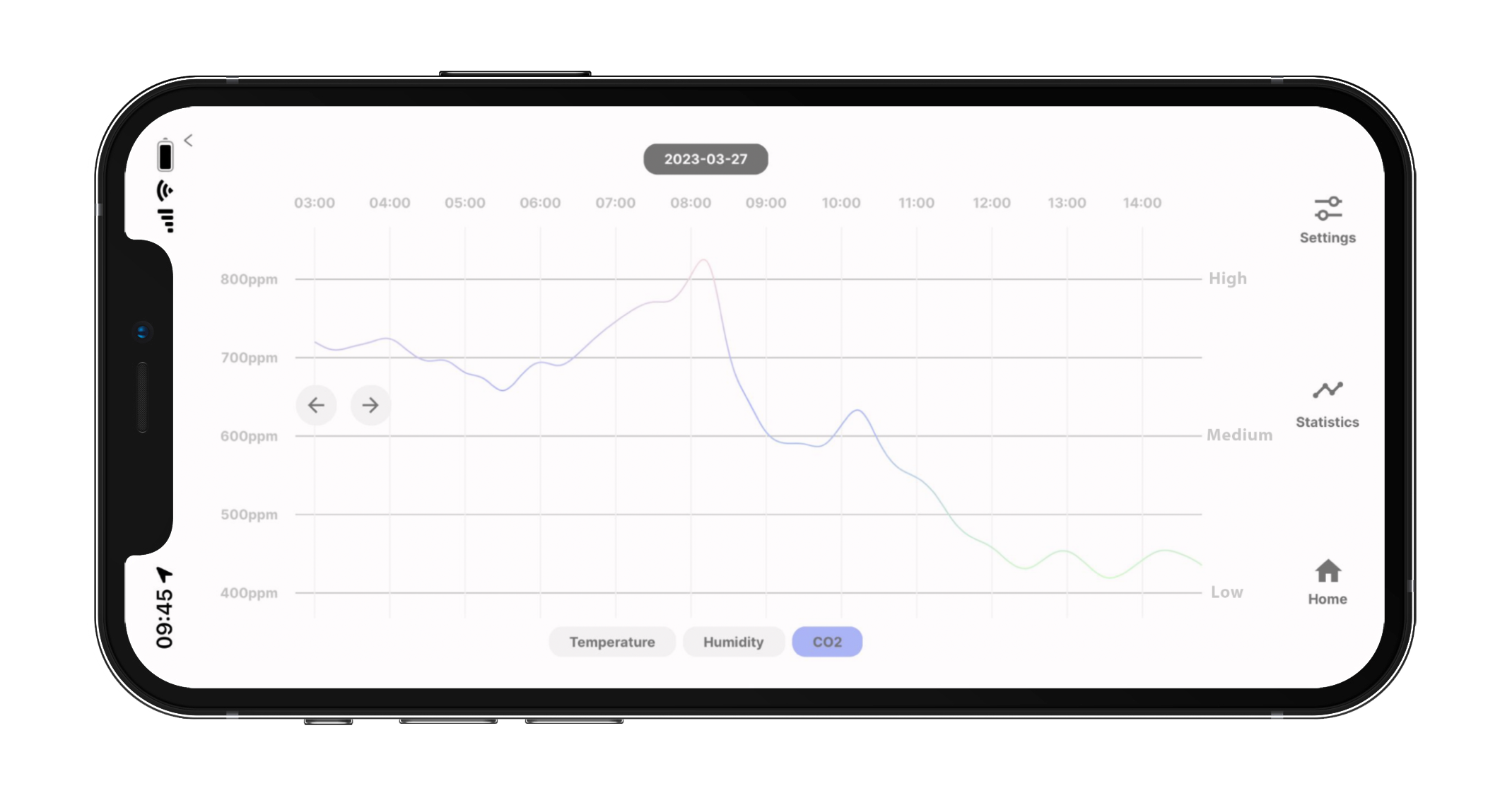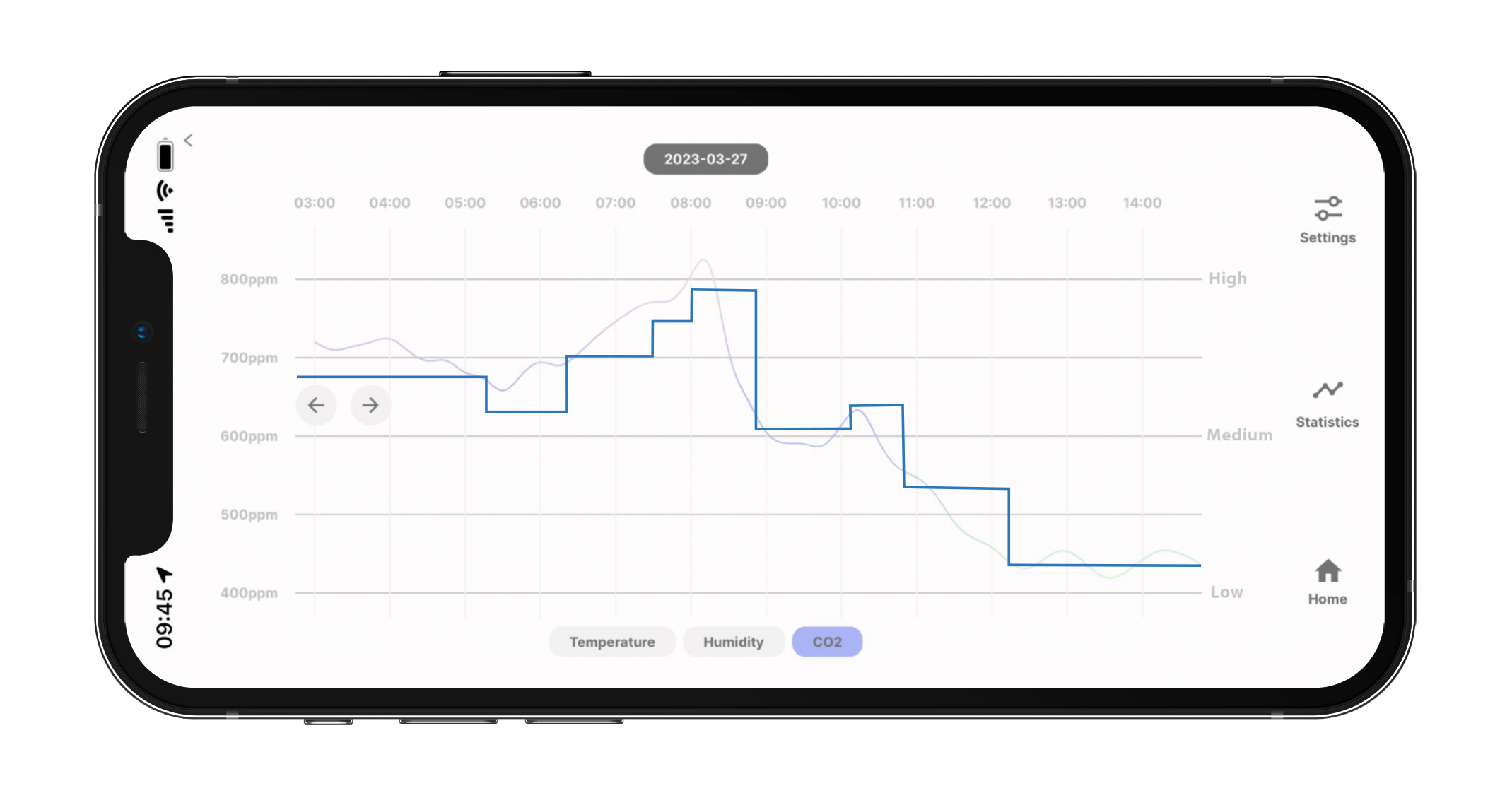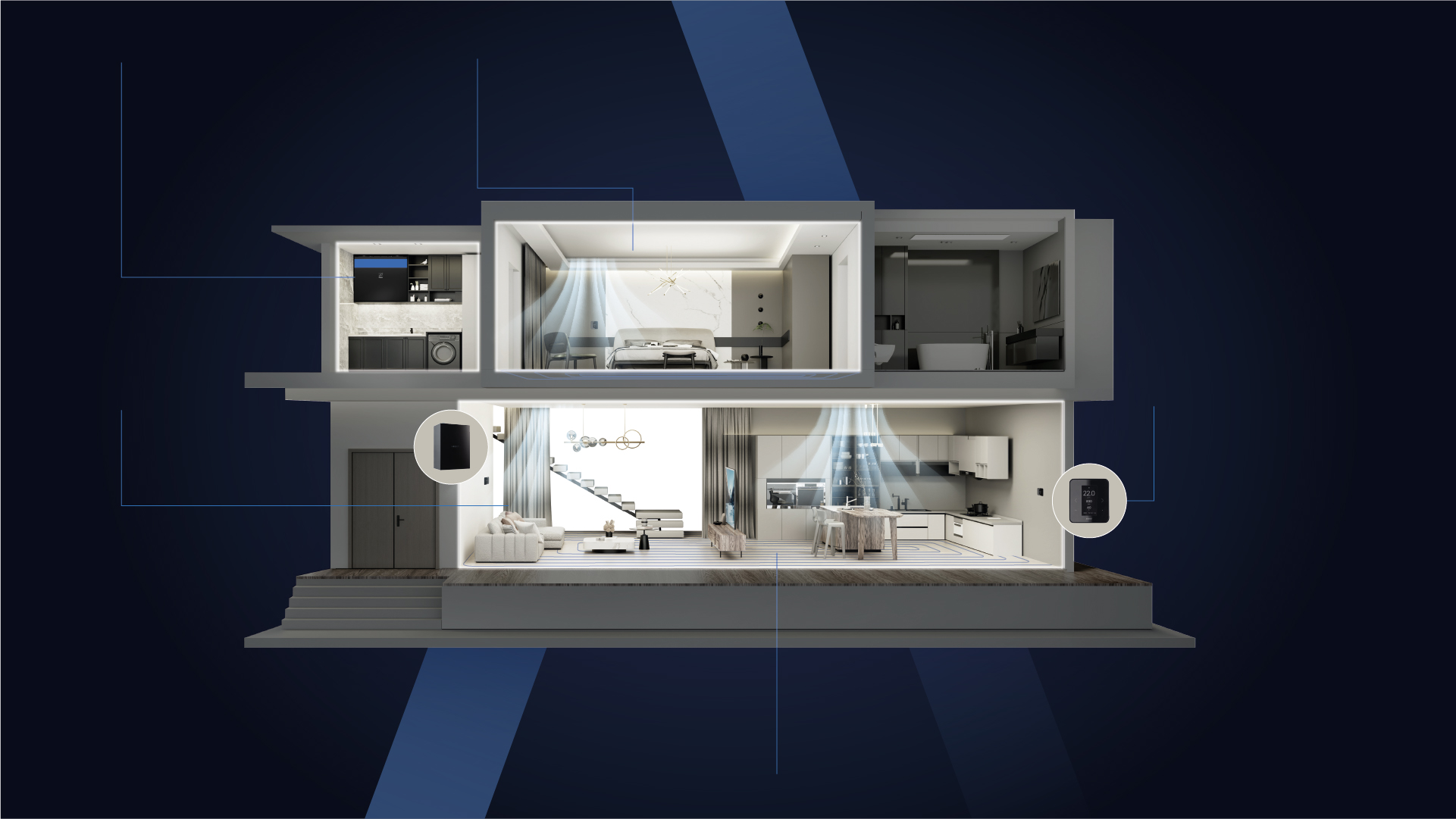Ventilation devices are built to make our lives better and healthier. They’re designed to create a comfortable indoor climate and living conditions. Or at least, they should be. But what does it take to create a healthy and comfortable indoor climate?
Let’s break it down – it all starts with CO2.
CO2 is the primary indicator of indoor air quality. Humans produce CO2 simply by breathing. CO2 is measured in ppm (parts per million), and fresh air outdoors has a CO2 level of approximately 400 ppm.
Humans can live comfortably in the range of 400 ppm – 800 ppm. If the CO2 levels rise above 800 ppm, we start to feel dizzy, lightheaded, and find it hard to concentrate on work or study. CO2 also impacts sleep.
If the CO2 levels are too high, you’ll experience restless sleep and won’t feel rested in the morning.

Why is CO2 important in the ventilation device context?
Very few ventilation companies produce CO2-controlled ventilation devices. Typically, ventilation devices aren’t really controlled at all. They just exchange air, and users can manage the airflow by adjusting speeds from a control panel on the wall or in some rare cases from the app. Users hardly ever do this.
Every house is a climate system on its own and if people are home, the air quality changes all the time. For instance, if you’re awake, you produce more CO2.
If you have guests over, they’ll bring their own CO2 into the party. Cooking, showering, burning candles, etc. – virtually everything you do affects indoor air quality. Your home’s air quality is never stable.
Below you’ll see a graph from the Airobot mobile application. It shows CO2 levels in a two-person household. You can see from the CO2 levels when people woke up, started cooking, and left home. The CO2 levels change throughout the day.

But, where’s the problem?
If a ventilation device operates at one speed, it doesn’t consider these “events” and fails to make significant improvements in air quality.
Over time, conventional ventilation devices will eventually clear the room, but its inhabitants might have long since left the house. Fresh, clean air should be available when people are in the room, not after they’ve left.
Airobot clears CO2 almost instantly
Airobot’s airflows are automatically controlled by CO2 sensors. If Airobot detects a rise in CO2 levels, it automatically intensifies airflows and brings in more fresh air.
When CO2 levels are lower, it switches to energy-saving mode, like when you leave the house for the day. Your ventilation doesn’t need to operate at the same speed for 8 hours while you’re at work. This way, Airobot uses about 30% less energy than conventional ventilation devices.
Here’s the same graph, but with illustrated ventilation speeds. Blue line represent’s ventilation speed.
Conventional ventilation devices typically have three speeds: Home, Away, and Boost. Airobot, on the other hand, has 100 speeds which adjust automatically according to CO2 levels. If necessary, you can also activate the boost mode from the Airobot app.



